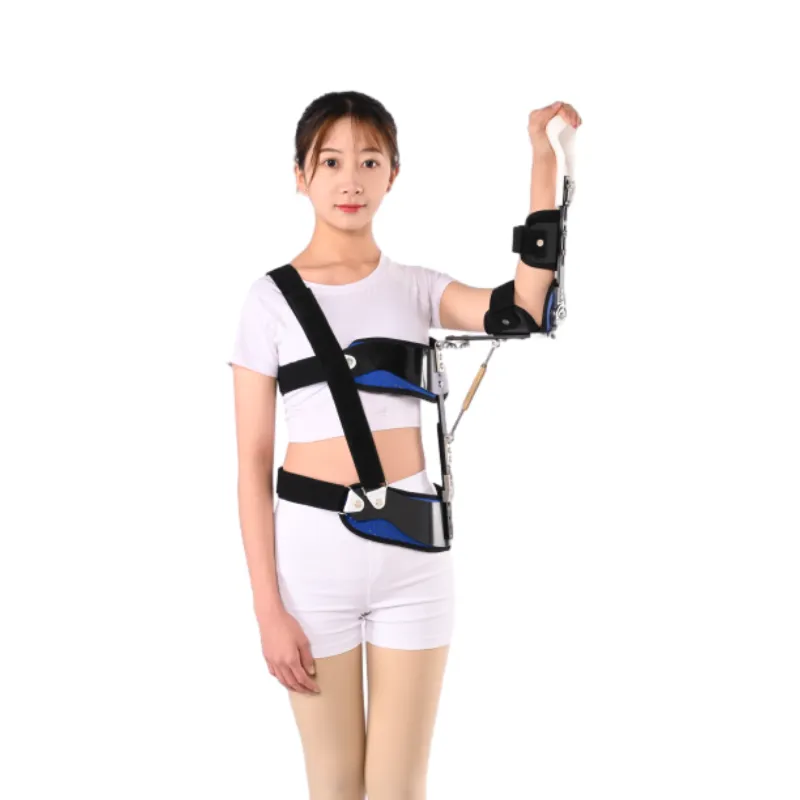Jan . 20, 2025 05:07
Back to list
different types of c collars
Cervical collars, commonly known as c collars, are crucial medical devices employed to stabilize and protect the cervical spine in various medical scenarios. Healthcare practitioners often rely on these collars to prevent further injury and aid in recovery. Understanding the different types of cervical collars, their uses, and benefits can greatly enhance the patient's recovery experience while ensuring the appropriate application in diverse circumstances.
Addressing specific needs, certain situations call for the use of the halo brace. This sophisticated apparatus consists of a band secured around the skull with pins that connect to a vest worn on the torso. By stabilizing the head, the halo brace effectively controls movement across the neck and upper thoracic spine, offering unparalleled immobilization. It is predominantly used in cases of extreme vertebrae misalignment or after reconstructive spine surgery to ensure the spine heals correctly without risking any deviations. Another variant, the Philadelphia collar, merges elements of both semi-rigid and rigid collars. Constructed from two molded plastic pieces padded for comfort, the Philadelphia collar provides robust support through anterior and posterior panels. Designed for medium to long-term use, it is commonly used for patients in rehabilitation post-surgery or significant neck injury. The secure fit helps maintain neck alignment while accommodating longer wear durations, an advantage for prolonged treatment processes. Each type of cervical collar serves distinct purposes, ensuring precise treatment catered to specific medical needs. It is important that these devices are chosen based on professional medical assessment, focusing on injury severity, patient comfort, and the desired outcome. Medical practitioners should stay informed about the latest developments in collar designs and materials, because technological advancements continually enhance their functionality, improving patient care. The effectiveness and safety of cervical collars hinge on proper fitting and patient adherence to usage guidelines. To enhance trust and confidence in prescribed treatments, patients should be counseled on the correct application and potential impacts of prolonged collar wear. Open dialogue between healthcare providers and patients about expectations and progress can further reinforce the therapeutic benefits of cervical collars. Remaining informed about the various types of cervical collars and their appropriate applications not only facilitates effective treatment but also underscores the expertise and reliability of the medical professionals involved. In a rapidly advancing medical landscape, embracing knowledge and maintaining authoritative guidance ensures that cervical injury treatments remain both current and effective, fostering a foundation of trust and care between providers and patients.


Addressing specific needs, certain situations call for the use of the halo brace. This sophisticated apparatus consists of a band secured around the skull with pins that connect to a vest worn on the torso. By stabilizing the head, the halo brace effectively controls movement across the neck and upper thoracic spine, offering unparalleled immobilization. It is predominantly used in cases of extreme vertebrae misalignment or after reconstructive spine surgery to ensure the spine heals correctly without risking any deviations. Another variant, the Philadelphia collar, merges elements of both semi-rigid and rigid collars. Constructed from two molded plastic pieces padded for comfort, the Philadelphia collar provides robust support through anterior and posterior panels. Designed for medium to long-term use, it is commonly used for patients in rehabilitation post-surgery or significant neck injury. The secure fit helps maintain neck alignment while accommodating longer wear durations, an advantage for prolonged treatment processes. Each type of cervical collar serves distinct purposes, ensuring precise treatment catered to specific medical needs. It is important that these devices are chosen based on professional medical assessment, focusing on injury severity, patient comfort, and the desired outcome. Medical practitioners should stay informed about the latest developments in collar designs and materials, because technological advancements continually enhance their functionality, improving patient care. The effectiveness and safety of cervical collars hinge on proper fitting and patient adherence to usage guidelines. To enhance trust and confidence in prescribed treatments, patients should be counseled on the correct application and potential impacts of prolonged collar wear. Open dialogue between healthcare providers and patients about expectations and progress can further reinforce the therapeutic benefits of cervical collars. Remaining informed about the various types of cervical collars and their appropriate applications not only facilitates effective treatment but also underscores the expertise and reliability of the medical professionals involved. In a rapidly advancing medical landscape, embracing knowledge and maintaining authoritative guidance ensures that cervical injury treatments remain both current and effective, fostering a foundation of trust and care between providers and patients.
Next:
Latest News
-
Abduction Pillow Brace: Comfortable Hip Support Post-SurgeryNews Aug.01,2025
-
Hard Cervical Collar - Hebei Jianhang Technology Co., Ltd.|Neck Support, Comfort, StabilityNews Aug.01,2025
-
Hard Cervical Collar - Hebei Jianhang | Neck Support, Adjustable FitNews Aug.01,2025
-
Hard Cervical Collar - Hebei Jianhang Technology Co., Ltd.|Advanced Neck Support, Adjustable FitNews Aug.01,2025
-
Hard Cervical Collar - Hebei Jianhang Technology Co., Ltd.|Neck Support&Comfortable DesignNews Jul.31,2025
-
Hard Cervical Collar - Hebei Jianhang Technology Co., Ltd.|Adjustable Neck Support, Lightweight Cervical CollarNews Jul.30,2025
Have a question? Keep in touch.





















